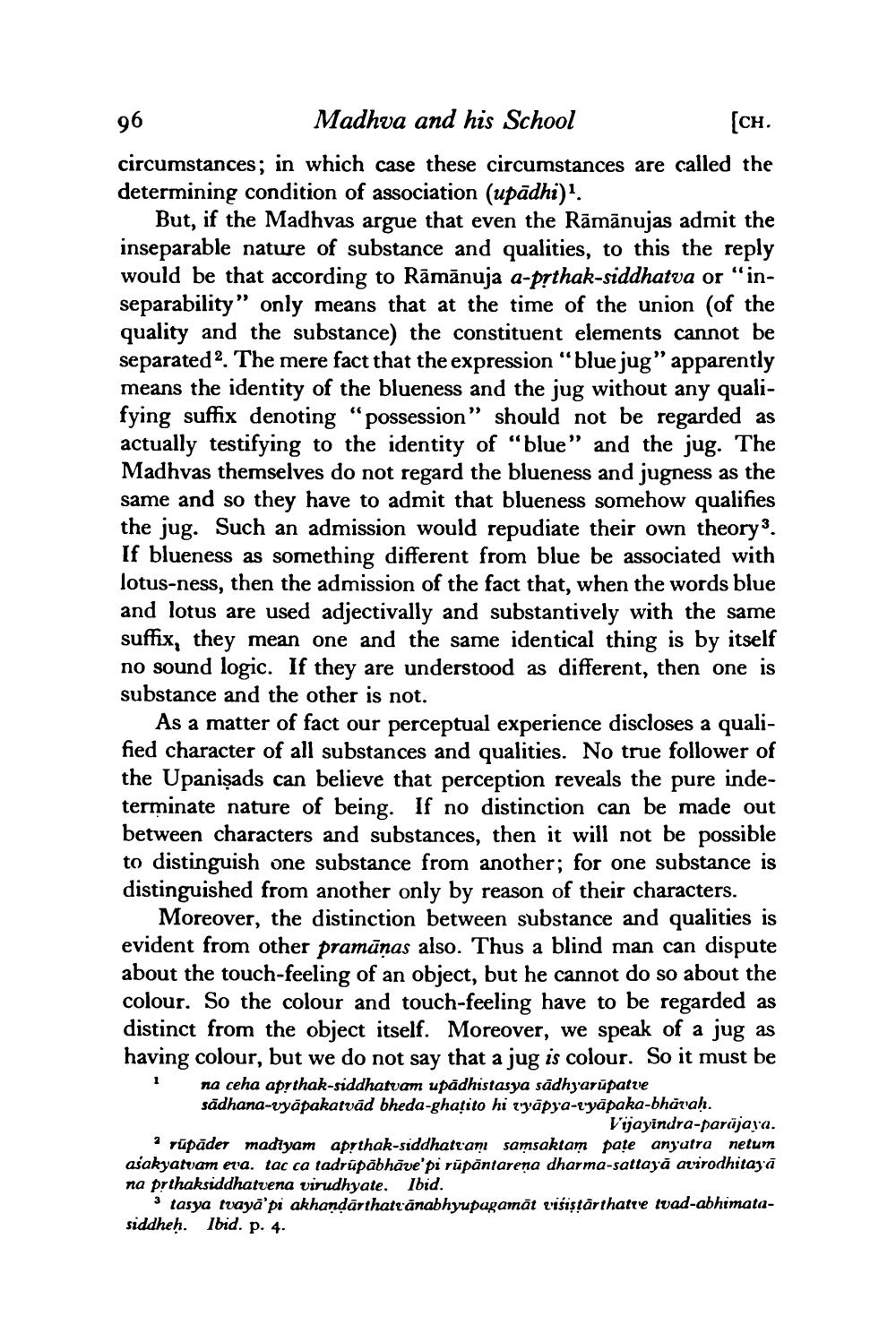________________
96
Madhva and his School
(CH. circumstances; in which case these circumstances are called the determining condition of association (upādhi)".
But, if the Madhvas argue that even the Rāmānujas admit the inseparable nature of substance and qualities, to this the reply would be that according to Rāmānuja a-pythak-siddhatva or "inseparability” only means that at the time of the union (of the quality and the substance) the constituent elements cannot be separated 2. The mere fact that the expression “blue jug” apparently means the identity of the blueness and the jug without any qualifying suffix denoting "possession” should not be regarded as actually testifying to the identity of "blue" and the jug. The Madhvas themselves do not regard the blueness and jugness as the same and so they have to admit that blueness somehow qualifies the jug. Such an admission would repudiate their own theory3. If blueness as something different from blue be associated with lotus-ness, then the admission of the fact that, when the words blue and lotus are used adjectivally and substantively with the same suffix, they mean one and the same identical thing is by itself no sound logic. If they are understood as different, then one is substance and the other is not.
As a matter of fact our perceptual experience discloses a qualified character of all substances and qualities. No true follower of the Upanişads can believe that perception reveals the pure indeterminate nature of being. If no distinction can be made out between characters and substances, then it will not be possible to distinguish one substance from another; for one substance is distinguished from another only by reason of their characters.
Moreover, the distinction between substance and qualities is evident from other pramūnas also. Thus a blind man can dispute about the touch-feeling of an object, but he cannot do so about the colour. So the colour and touch-feeling have to be regarded as distinct from the object itself. Moreover, we speak of a jug as having colour, but we do not say that a jug is colour. So it must be 1 na ceha aprthak-siddhatvam upādhistasya sādhyarūpatve sādhana-vyāpakatvād bheda-ghatito hi zyāpya-e'yāpaka-bhāvah.
Vijayindra-parūjava. ? rūpāder madiyam aprthak-siddhatrani samsaktam pate anyutra netum asakyatuam era. tac ca tadrupābhāve pi rūpāntarena dharma-sattajā avirodhitajā na prthaksiddhatvena virudhyate. Ibid.
3 tasya tvaya'pi akhandārthattānabhyupagamät l'isistarthatre tvad-abhimatasiddheḥ. Ibid. p. 4.




